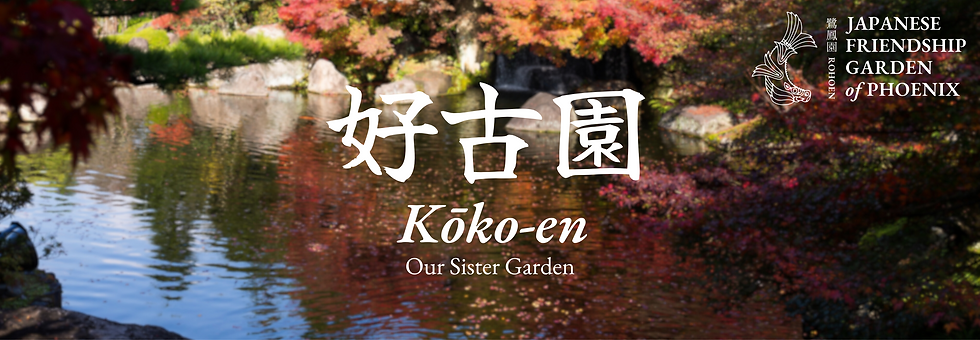Building a Nobedan Pathway
- JapaneseFriendshipGarden

- Jul 13, 2023
- 2 min read
Japanese gardens aim to capture the natural beauty of landscapes, by creating and idealizing elements such as mountains, rivers, forests, and lakes, within a limited space. To capture the essence of nature, a lot of care and meticulous work goes into the planning and execution of Garden elements to ensure they are both beautiful and most importantly, functional.
One such example of this delicate balance can be found in our Niwashi's recent project—a nobedan (延段行) pathway constructed behind our tea house in October 2022.

A nobedan pathway is a type of garden pathway composed of various sizes of stones and stone slabs. The larger stones, known as tanzaku-ishi (短冊石), provide ample space for guests to rest peacefully without tripping, allowing them to absorb the surrounding natural scenery. In contrast to stepping stones (tobiishi, 飛び石) that encourage continuous and careful walking, nobedans are designed for heavier use due to their flatter and wider surface. Thus, a nobedan was chosen for our teahouse pathway to accommodate the tea ladies and staff quickly entering and exiting during our nighttime Otsukimi event.

The project began with our niwashi (庭師, gardeners) spending two days carefully selecting stones that matched the existing ones in the garden and could serve the nobedan pathway. Led by our Garden Curator, Ben Schrepf, the niwashi had to determine the size and proportion of each stone to create a natural pattern within the pathway while considering the lines formed by the spaces between them. Their aim was to prevent all lines from converging on a single point and ensure uniform width throughout. By employing a 'random' (in reality, carefully constructed) pattern in the spacing, the viewer's gaze smoothly traverses the entire nobedan, avoiding any unintended focal points that might disrupt the natural flow.

Once the placement of stones was finalized, concrete was used to secure them in position. Each stone was meticulously placed by hand, taking into account the depth and width of space around them (meji, 目). The niwashi used specialized tools called meji-gote to scrape and press the concrete, ensuring the stones remained stable and the surface appeared clean while allowing rainwater to drain effectively.
The nobedan itself is slightly inclined to facilitate water drainage. However, the deliberate arrangement of stones and lines creates an elegant flow of water between each stone, preventing the top surface from becoming wet and offering a pleasing sight to guests. Our gardeners carefully consider the water's trajectory, envisioning how it will appear to viewers as it traverses the pathway. When successful, the water gracefully cascades down the curves and edges of the stones, sparkling in the light before finding its way into the ground.

The pursuit of this balance between form and function poses a daily challenge for our niwashi working in a Japanese garden amidst a desert landscape. Nevertheless, their unwavering dedication and expertise consistently result in a beautiful space for visitors and friends of the garden.
We invite you to take a moment during your visit to the Japanese Friendship Garden of Phoenix to immerse yourself in the scenery and admire the exquisite craftsmanship of the nobedan pathway.
And if you have any lingering questions about the construction of the path, please let us know in the comments below!
.png)



I love how creative you can get in Melon Playground. You can build little scenarios, create funny experiments, or just see how far chaos can go. It never feels repetitive!